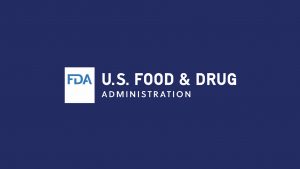On June 14, 2024, China NMPA has released this new guideline. This guideline aims to enhance the management of clinical trial institutions for medical devices, ensuring compliance with regulatory standards and safeguarding public health.
Scope and Purpose
The guideline is designed for use by drug regulatory authorities when organizing supervision and inspections of medical device clinical trial institutions. They provide a structured approach to assess the qualifications, management, and operational practices of these institutions, ensuring adherence to relevant laws and regulations, such as the Regulations on the Registration and Filing of Medical Devices and the Good Clinical Practice (GCP) for Medical Devices.
Key Inspection Areas
The document outlines 16 inspection areas, covering 96 specific items. These are divided into two main sections: institutional qualifications and clinical trial professional standards. Each item is categorized as critical (★), major (★), or general, depending on its impact on the trial’s quality and safety. Critical items total 8, major items 43, and general items 45.
Inspection Findings and Deficiency Classification
Deficiencies identified during inspections are classified into three levels: serious, major, and general. The classification criteria include:
1. Serious deficiencies: Typically linked to non-compliance with critical items.
2. Major deficiencies: Associated with major items.
3. General deficiencies: Related to general items.
Institutions must meet all requirements to pass inspections, with the final assessment based on the severity and impact of any deficiencies found.
Inspection Conclusion Principles
The conclusions from on-site inspections are determined by the presence and severity of deficiencies:
1. “Compliant” – No serious or major deficiencies, with fewer than five general deficiencies that do not significantly impact trial quality or participant safety.
2. “Requires Rectification” – Presence of general deficiencies equal to or exceeding five, or up to three major deficiencies that may affect trial quality or participant safety.
3. “Non-compliant” – At least one serious deficiency, more than three major deficiencies, or any condition that severely impacts trial quality or participant safety.
Detailed Inspection Items
The guideline provides detailed checklists for assessing various aspects of cli- Institutional qualifications and conditions (e.g., licensure, appropriate facilities, and equipment)
– Organizational management (e.g., dedicated departments for clinical trial management, trained personnel)
– Filing-keeping and data traceability
– Ethical review processes (e.g., functioning ethics committees, training for ethics committee members)
– Compliance with GCP standardsnical trial institutions, including:
Implementation and Compliance
These guidelines are implemented on a trial basis and will be refined based on feedback from inspections. Institutions are encouraged to familiarize themselves with the detailed inspection points and ensure all aspects of their clinical trials comply with the outlined standards.
Conclusion
The introduction of these comprehensive supervision and inspection guidelines marks a significant step in regulating medical device clinical trials in China. By standardizing inspection practices and enhancing oversight, the NMPA aims to improve the quality and safety of medical device trials, ultimately protecting public health and maintaining high ethical standards in clinical research.
For further information and detailed inspection checklists, please contact: info@bradyknowsmedical.com.please contact: info@bradyknowsmedical.com.



